What Happens If You Put Too Much Oil In A Motorcycle?- (4 Symptoms)
A motorcycle engine oil lubricates the drivetrain and keeps the clutch plates cool. It’s recommended to change the engine oils every 5,000 miles.
But, what happens if you put too much oil in a motorcycle? Filling too much oil in the motorcycle will increase the pressure on the crankcase, which can reach out to your intake system and affect the bike’s performance. You will face spark plug carbon fouling, exhaust backfiring, black smog from the motorcycle exhaust, and engine misfire.
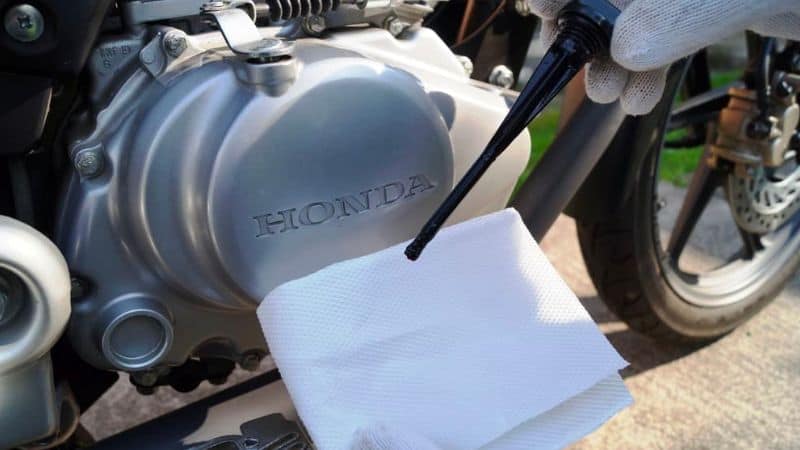
Table of Contents
- 1 What Happens If You Ride A Motorcycle With Too Much Oil?
- 2 How Much Is Oil Too Much For A Motorcycle?
- 3 What Are The Symptoms Of Too Much Oil In A Motorcycle?
- 4 How To Remove Excess Oil From A Motorcycle?
- 5 Can Too Much Oil Cause Misfire?
- 6 Can Too Much Oil Damage Your Engine?
- 7 Can Too Much Oil Cause White Smog?
- 8 Conclusion
What Happens If You Ride A Motorcycle With Too Much Oil?
A motorcycle engine is designed with a particular amount of oil for lubricating and keeping the components from wear. The motor oils also help reduce the temperature to keep the engine cool.
If your motorcycle has too little oil, it damages the engine components. Similarly, too much oil will increase the pressure on the crankcase, and excessive oil may reach the intake system and affect the bike’s performance.
Excessive oil also increases the risk of leakage from places where other accessories are attached. It could also affect the speedometer readings if your motorcycle has a digital speedometer sensor installed on the geartrain.
In short, a motorcycle engine is designed with the right amount of oil to function properly. Too much or too little engine oil will damage the motorcycle engine components and affect performance.
How Much Is Oil Too Much For A Motorcycle?
Every motorcycle has a different engine size and crankcase capacity. So, it’s not straightforward to answer this question. In order to understand the right amount of engine oil, you should refer to your motorcycle user manual.
Generally, a 350cc motorcycle takes 2.7 to 3 quartz engine oil for proper lubrication and functioning. Again, it will vary from manufacturer to manufacturer and bike model. A motorcycle with a horizontal (flat) engine shape requires more oil than a vertical one.
Here’s a chart for the engine oil capacity of some popular motorcycles:
| Engine Size | Engine Oil Capacity |
|---|---|
| 150cc | 1.0 quartz |
| 250cc | 1.7 to 2.0 quartz |
| 350cc | 2.7 to 3.0 quartz |
| 500cc | 3 to 3.5 quartz |
| 600cc | 3.5 to 4.0 quartz |
| 700cc | 3.7 to 4.0 quartz |
| 850cc | 3.7 to 4.0 quartz |
| 1000cc | 4.3 to 4.5 quartz |
| 1200cc | 4.8 to 5.0 quartz |
Note– These are general estimates. The engine oil capacity varies from manufacturer to manufacturer and bike to bike. So, always check your motorcycle user manual for the actual engine oil capacity.
What Are The Symptoms Of Too Much Oil In A Motorcycle?
If you recently top-up your motorcycle with engine oil, you must verify the oil level with the sight glass and dipstick.
If it’s above the marked level, you should drain the excess oil from the motorcycle (I have explained the process for removing excess oil in the next subheading).
Moreover, some obvious symptoms indicate the excess oil in a motorcycle engine. Here are some common symptoms of too much oil in a motorcycle-
- Excessive Smog: If you overfill the motorcycle with engine oil, then excessive oil will reach the intake system and mix with the air-fuel mixture. This excess oil will combust with air and fuel, creating excessive exhaust smog. Generally, the color of smog from the combustion of synthetic oil is white. So, check the oil level with a dipstick if white smog is coming from your motorcycle exhaust.
- Engine Misfire: Another symptom of overfilled engine oil is engine misfiring. The burnt synthetic oil creates a layer around the spark plug, which causes the partial combustion of air and fuel engine misfires.
- Oil Leakage: If you overfill any reservoir than its capacity, then some oil will come out from various holes where accessories are installed. If you notice oil leakage near the alternator wire or digital speedometer sensor, then remove the excess oil from the engine.
How To Remove Excess Oil From A Motorcycle?
If you have added too much oil to your motorcycle, you’ll notice any of the above-mentioned symptoms. Riding a motorcycle with overfilled engine oil will damage the engine; hence you should remove the excess oil.
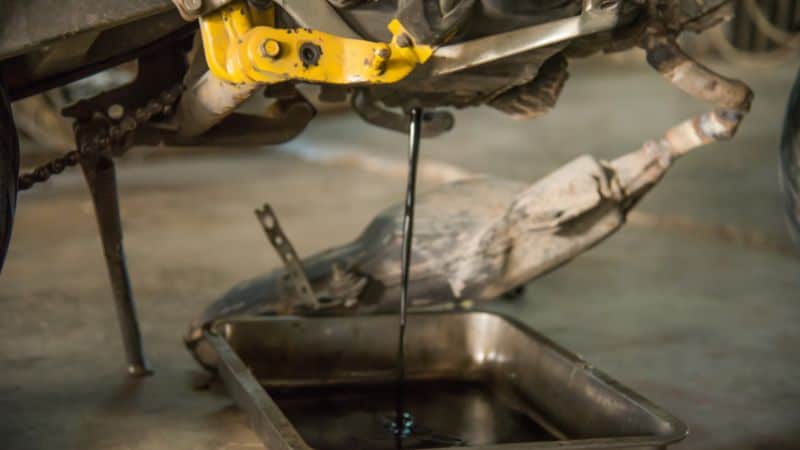
Here are some easy methods to remove excess oil from your motorcycle engine:
- Loosen The Drain Plug: The easiest way to remove the excess oil from the motorcycle engine is by loosening the drain plug. A drain plug is located below the crankcase. You can find the right size from your spanner set and rotate the drain plug counterclockwise. Don’t forget to place a container below the drain plug to collect engine oil.
- Use Siphon Method: If you have a small diameter flexible pipe, dip one end into the reservoir and suck the other to generate the siphoning effect. Ensure your bike is on the center stand and the oil container is lower than the engine reservoir.
- Use Bottle Sprayer: If you have a sprayer bottle at home that you use for lawn maintenance, you can remove the excess engine oil with that too. Insert the sprayer straw inside the engine and pump excess oil.
- Suck With Syringe: You can use a syringe to suck out excess oil from the motorcycle’s engine. Follow the above method and remove oil until it reaches the desired level.
Can Too Much Oil Cause Misfire?
Yes, too much oil in any vehicle causes the engine to misfire. It happens because the excess engine oil reaches the combustion chamber and creates a layer around the spark plug. When you twist the throttle, the spark plug doesn’t generate a sufficient spark to ignite the air-fuel mixture, which leads to misfiring.
Can Too Much Oil Damage Your Engine?
Yes, too much oil will damage the engine and other components attached to the engine casing. Hence, any excess oil should be drained if you notice an overfill. You can loosen the drain plug to remove excess oil from any motorcycle’s or car’s engine.
Can Too Much Oil Cause White Smog?
Yes, white smog from the exhaust is a common sign of overfilled oil. The excess oil finds its pathway to the combustion chamber through the intake system and burns along with the air and fuel mixture—burning synthetic oil with gasoline or diesel creates white smog.
Conclusion
Check the oil level with a dipstick if you notice any of the above-mentioned symptoms. If the engine oil is overfilled, remove the excess oil by draining it out. After draining the excess oil, don’t forget to clean the spark plug. I hope you found this guide helpful. Let me know in the comment box.
Similar Guides:
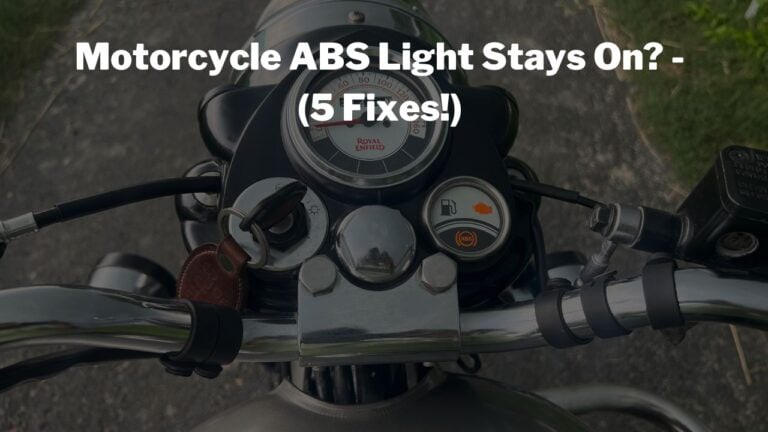
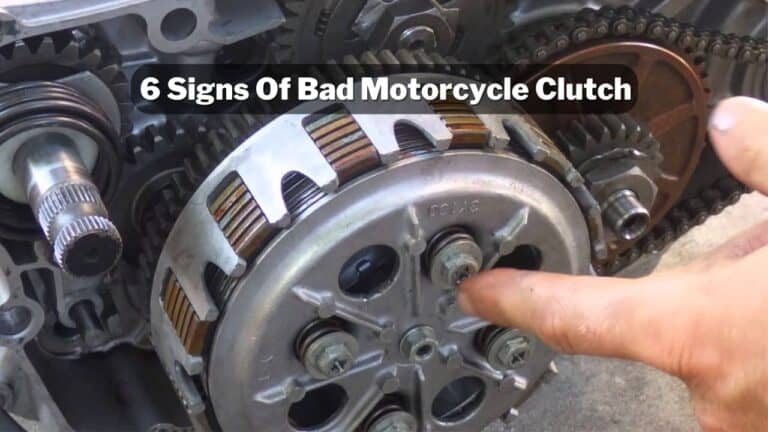
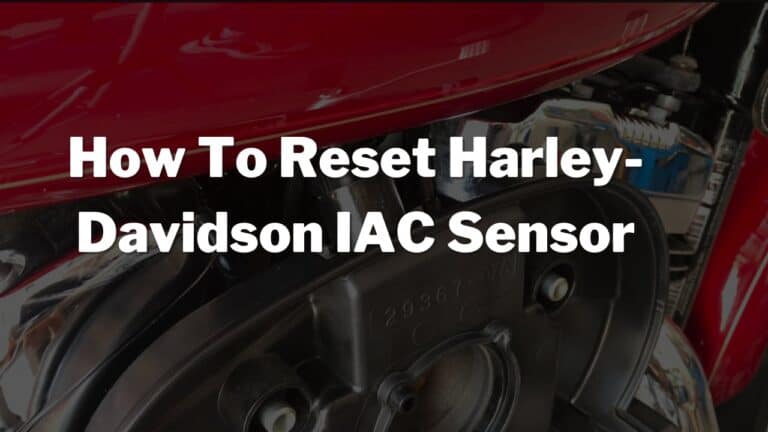
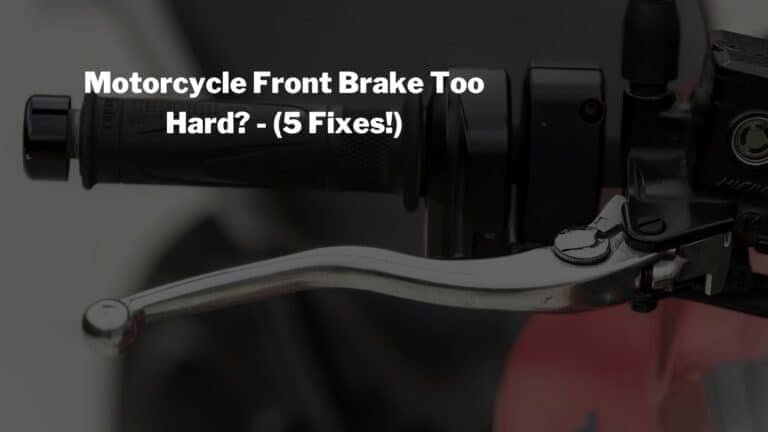

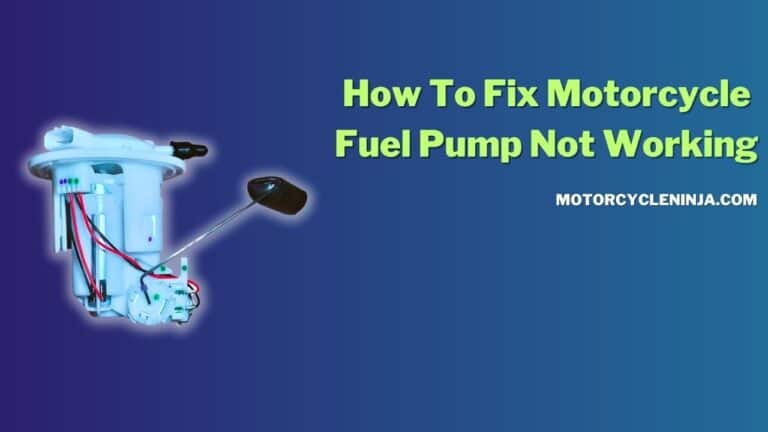
what amount can I put in 175cc engine of chain timing 6 gear,,, ?
Generally, 175cc engine takes 900 ml to 1L of oil. However, I recommend you to refer the motorcycle manual to know exact capacity.
This article provides valuable information for motorcycle enthusiasts. The article highlights the potential consequences of overfilling a motorcycle engine with oil, offering a clear and concise explanation that can help riders avoid such issues. I appreciate the article’s approach, which combines technical knowledge with practical advice, making it accessible to both novice and experienced riders. The author’s expertise shines through, providing readers with a comprehensive understanding of the topic. The inclusion of tips on how to properly measure and maintain the right oil level further enhances the article’s value. Overall, this insightful piece serves as a reliable resource, promoting safe and efficient motorcycle maintenance.